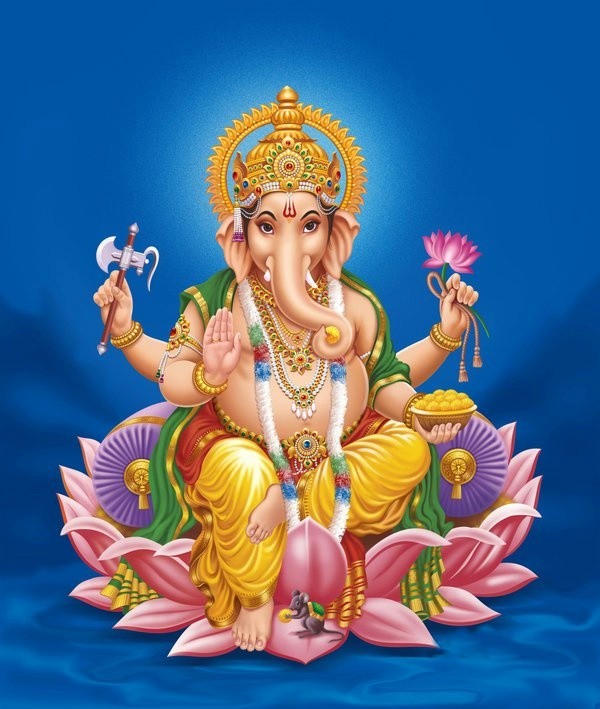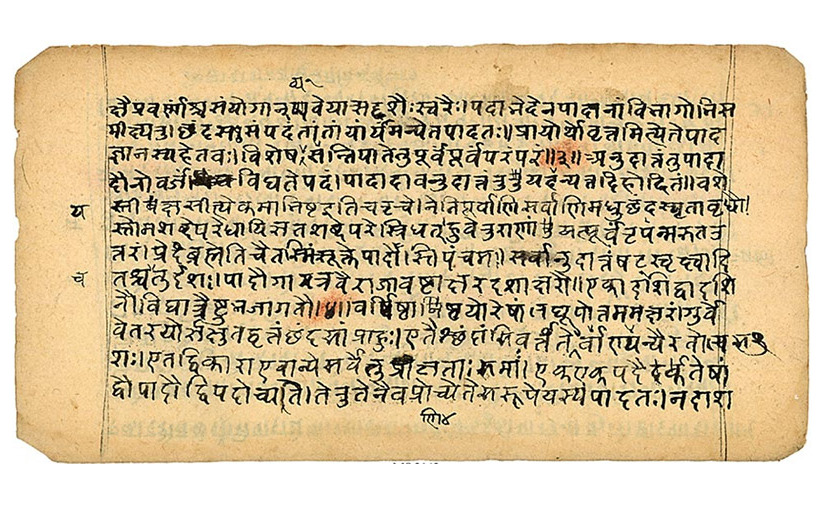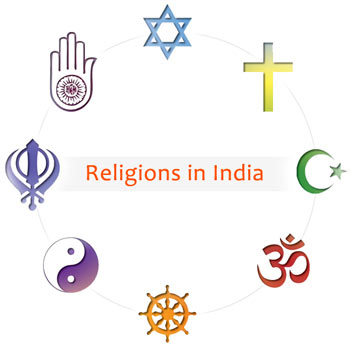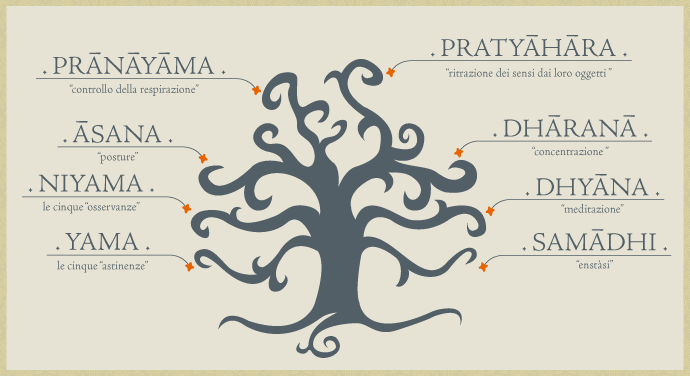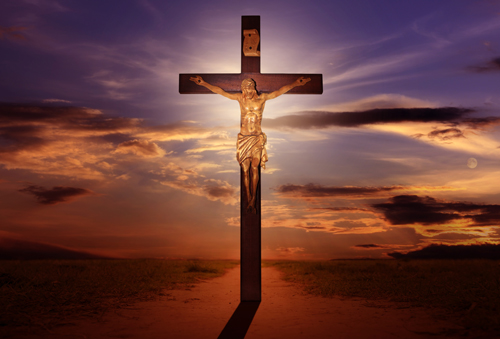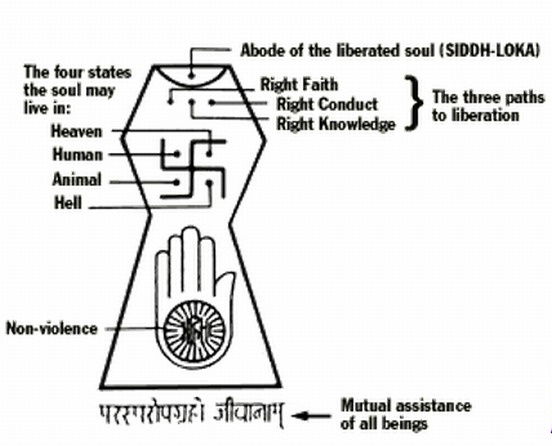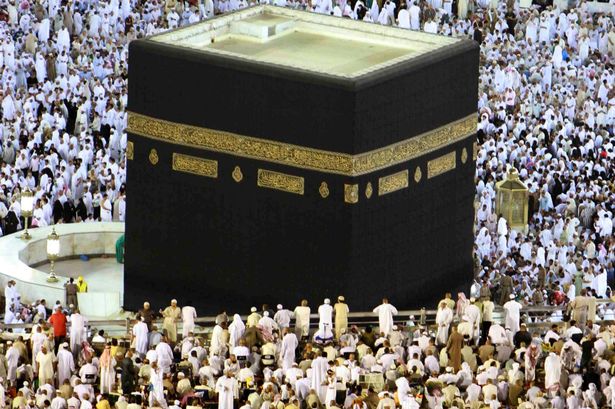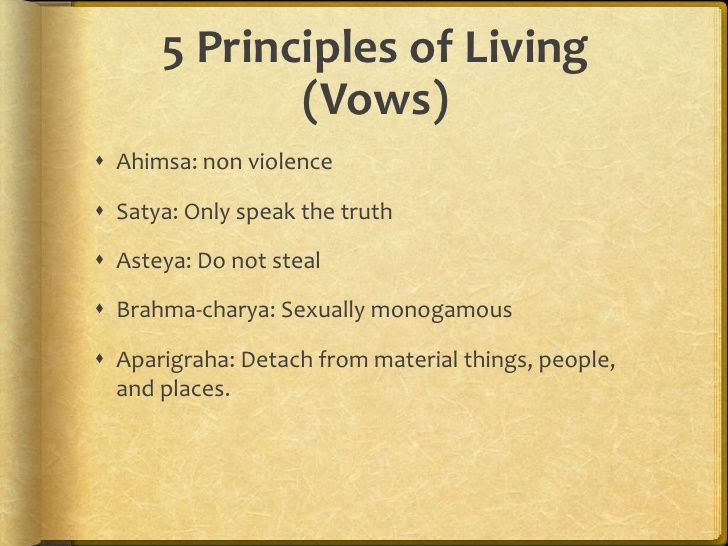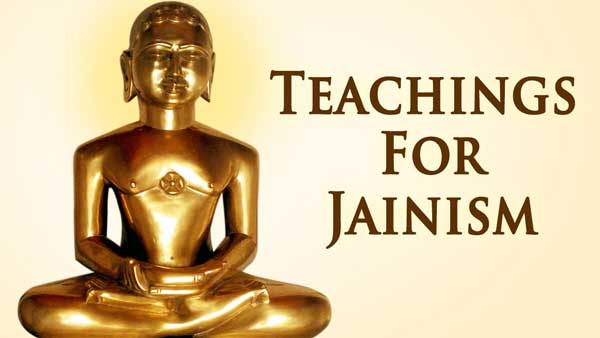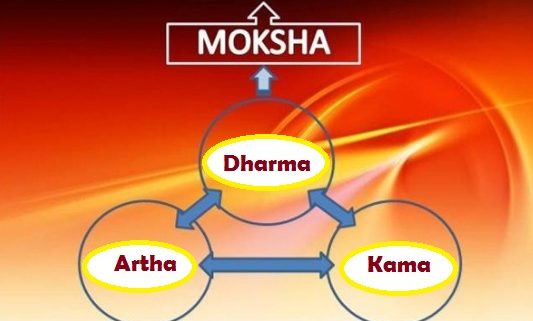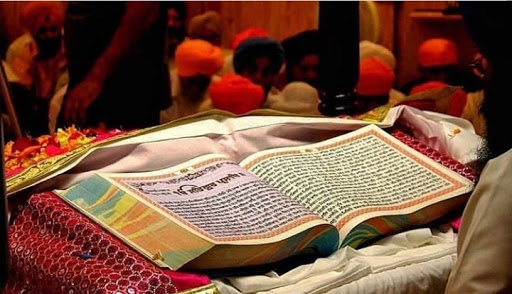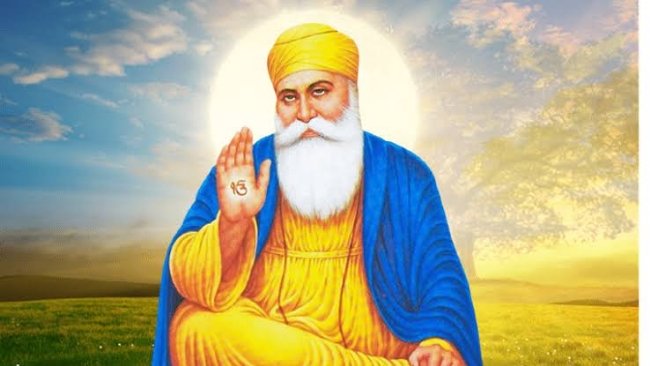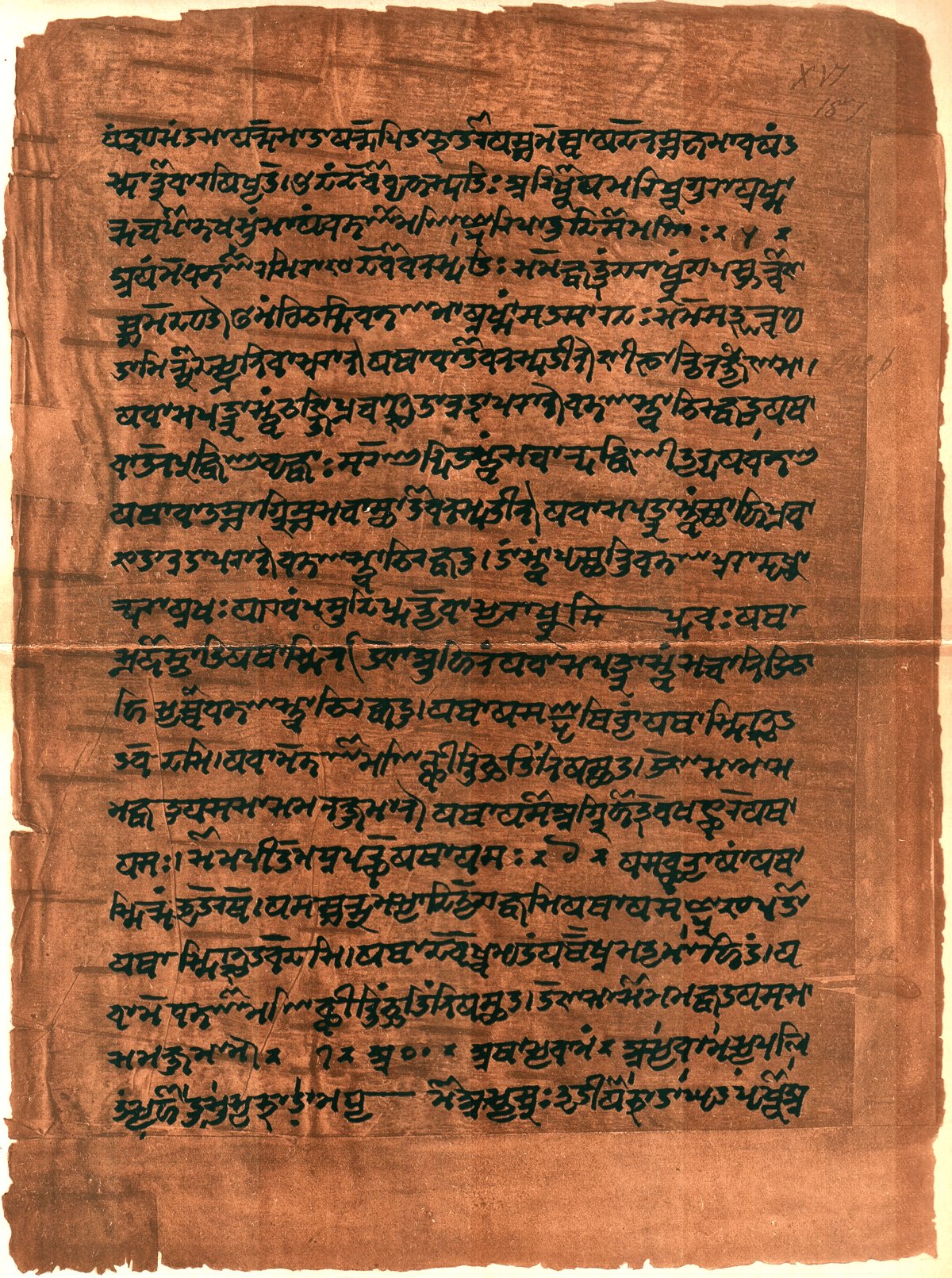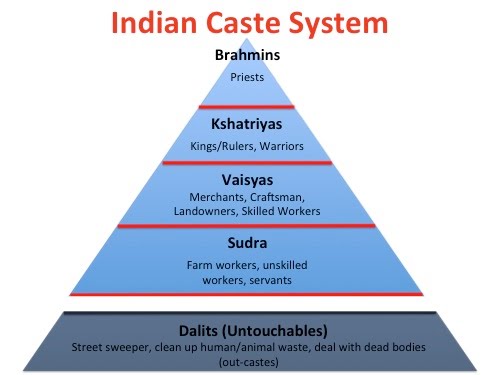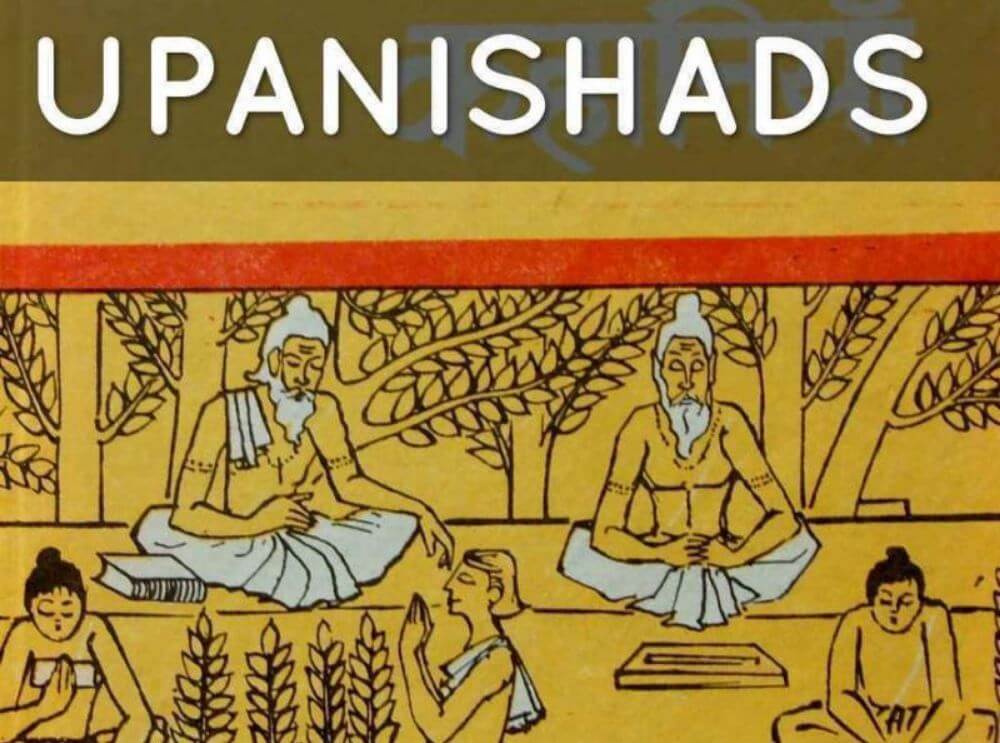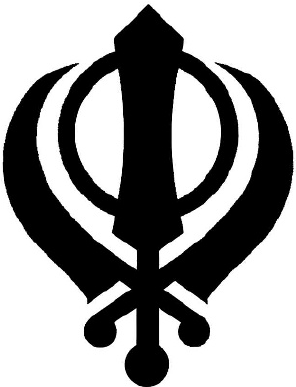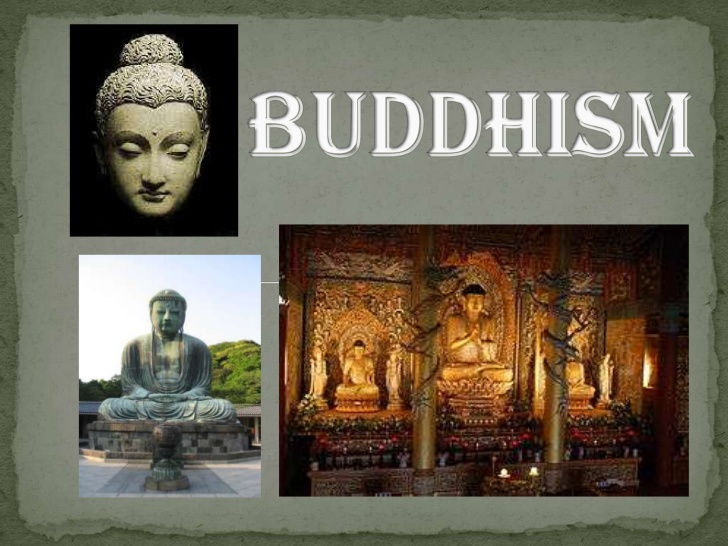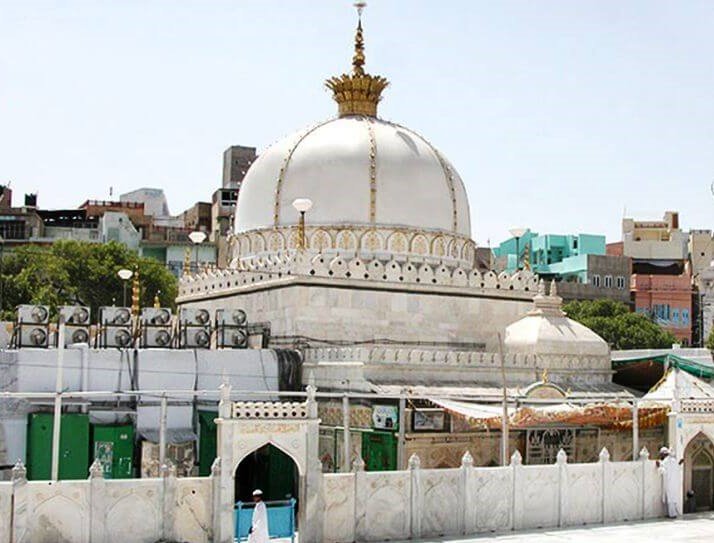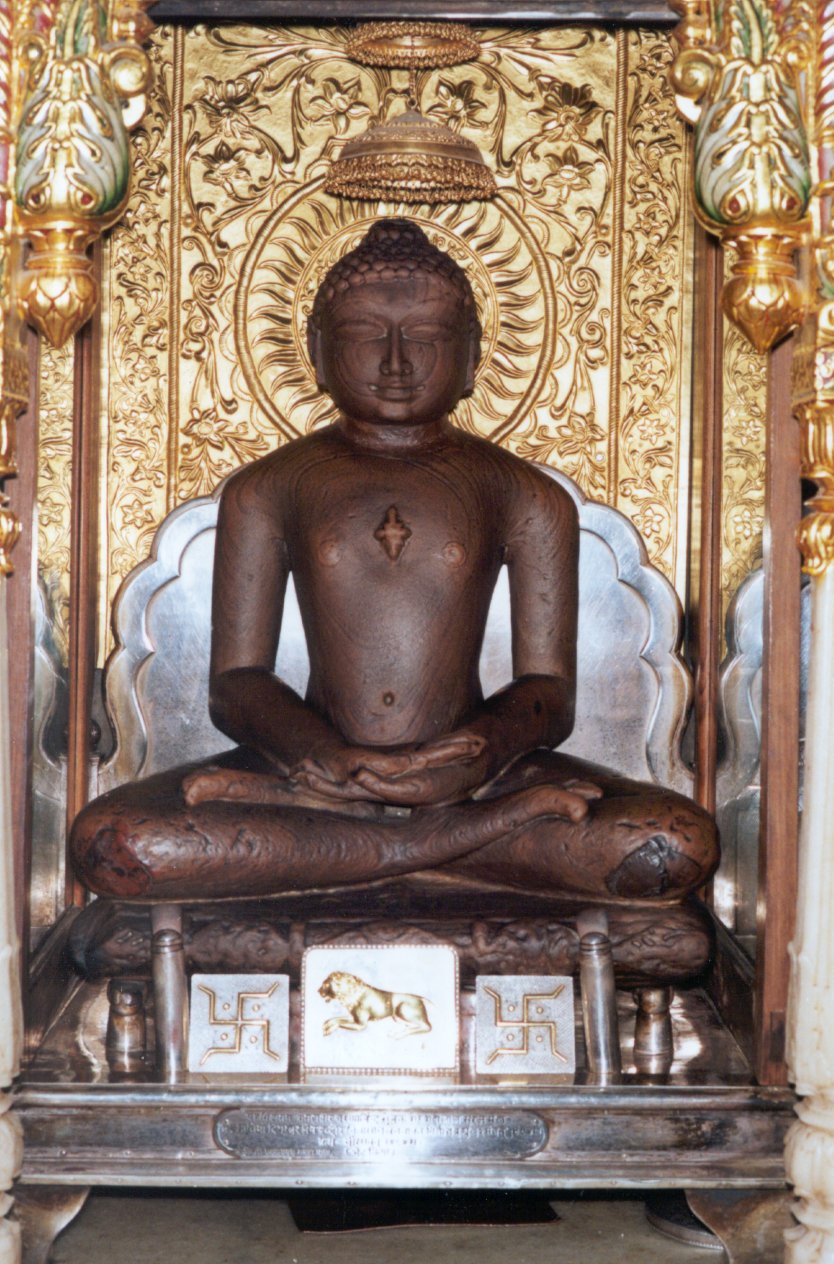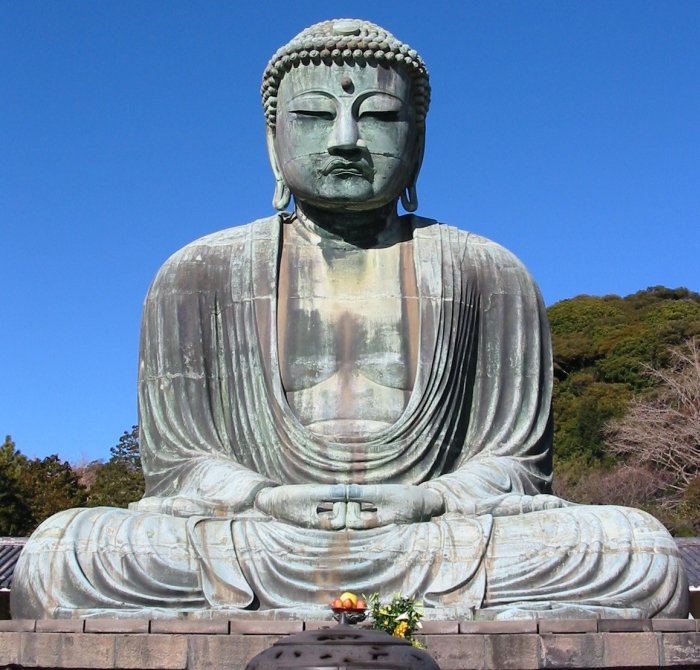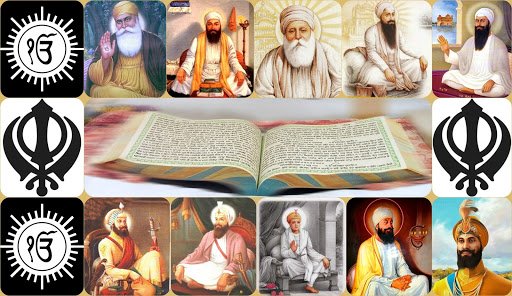Hinduism - Religion in India
- Home
- Religions in India
- Hinduism
Please check some of the inbound links to the page
Introduction
Hinduism is an Indian Religion and is the third largest religion in the world. People who follow Hinduism culturally, ethnically or religiously are known as Hindus. One of the oldest religions in the world is Hinduism. It is widely practiced in India and in some Asian countries. The word Hindu is derived from the Sanskrit word Sindhu (which is the name of the river). The followers of Hinduism are known as Hindus.
At one point of time it was believed that Hinduism was brought to India by the Aryans who invaded Indus valley civilisation, however this idea is still being debated. Referred to as Sanathana Dharma, Hinduism explains the sufferings of people in a simple way. Sanathana Dharma means ‘eternal duty’. According to this every living creature has a duty to perform and a role to play on this earth. It says that if a person is helping another person then it is the service offered to God.
Hinduism doesn’t have any single founder. It contains scriptures about the preaching. It says that whatever people suffer in this life is because of the Karmas (actions/ deeds) done in his/her previous life. If good deeds are done then the person will reap good fortune in his next life otherwise he bears the brunt in the next life. Hinduism has many sacred books like Vedas, Upanishads, Bhagvadgita, the purnas, the smritis etc.
Hinduism strongly believes in reincarnation and attaining moksha (union with God) for the good deeds done in our life span. According to Hinduism it recognizes the main objectives for human life are Dharma, Artha, Kama, Moksha, Karma and Samsara. According to Hinduism to attain moksha one has to work hard and follow the spirituality path along with doing good for others.
It can be said that Hinduism did not start as any religion. People who started following the preaching called it Hinduism. The followers are known as Hindus. It believes in 3 main gods, Brahma—the creator, Vishnu—the preacher and Shiva—the destroyer. Hinduism has different viewpoints on the evolution and origin of human life on our planet earth. Hinduism strongly believes that the universe was created by God and we all are his creators.
In my opinion it can be said that Hinduism is not a rigid collection of texts or beliefs but a collection of intellectual and philosophical views which are followed by people for many decades. It does not have any one single God for people to follow; there are many God and Goddesses where people are free to follow.
It is interesting to note that at least one animal is attributed to each of the Indian Gods. Like Lord Vishnu is linked to Garuda (eagle), Lord Shiva (cobra and bull), Lord Ganesha is linked to elephant and rat, Lord Muruga is lined to peacock, Lord Parvati is linked to lion, Lord Saraswati is linked to white swan, Lord Ayyapa is linked to tiger, Lord Hanuman is lined to monkey etc. The idea seems to be that we human beings have to live in harmony with the ecosystem including flora and fauna for sustainable living.
The preaching of Hinduism says that there is God present in every life be it plants, humans or animals. Hence it preaches no harm to them. It says that one who works selflessly and who does not harm others will attain moksha (meaning eternal peace). As per a shloka from Mahabharata which says ‘Dharmo rakishita rakshanthan’ which means dharma (righteous behavior expected from each and everyone) protects the people who follow the path of dharma . Dharma is nothing but following the path of truth and not doing and physical or mental harm to others.
Sects of Hinduism/ Hindu Denominations
Hinduism is further divided into four sects Vaishnavism, Shaivism, Shaktism, Smartism. Among these subdivisions each believes in one different god. However every Hindu believes the presence of atma, reincarnation and karma. Vaishnavism being the largest division in Hinduism is considered as supreme among other sects.
The followers of Vaishnavism believe that lord Vishnu is the ultimate protector of the Universe. Other than Lord Vishnu, Vaishnavists also follow Lord Krishna and Lord Rama. It is believed that lord Rama or Krishna is the incarnation of lord Vishnu on earth at different times in the past to ward off evil. Vaishnavites are very orthodox, devoted and god fearing people. It is often a debate whether the people should be god fearing or god loving? The sub sects in Vaishnavism are:
- Lakshmi sampradaya
- Brahma sampradaya
- Rudra sampradaya
- Kumara sampradaya
- Ramanadi sampradaya.
Followers of Shaivism consider Lord Shiva as the ultimate protector of the universe. The sub sects of the Shaivism are:
- Pashupata Shaivism
- Shaiva Siddhanta
- Kashmir Shaivism
- Siddha Siddhanta
- Lingayat
- Shiva Advaita
Shaktism followers believe in Goddesses in different forms like Kalki, Durga, Lakshmi, Saraswati, and Parvati as the ultimate control of the universe. Shakti tradition is mainly found in West Bengal, Assam and in some other parts of India. Animal sacrifice is mainly followed by these followers.
Smartism followers believe in all deities and consider Lord Shiva, Vishnu, and Goddess as same. They preach people to follow all Gods as he is the ultimate creator of the world.
Origin and History of Hinduism
Earlier Hinduism was evolved as a set of rules and regulations to be followed by the people and lead a disciplined life. However with the passage of time it was transformed into religious concepts. Many scholars believe that Hinduism is a fusion of various Indian cultures and concepts. To understand in a better possible way, history of Hinduism can be divided into three phases- first is the Pre Vedic Period, second period was from 800 BCE to 200 BCE and the third period is the early puranic period from 200 BCE to 500 BCE. Each period made Hinduism more vast. The third period can be considered as the golden age for Hinduism as the six branches of Hindu philosophy evolved.
It is believed by most of the scholars that Hinduism started around 2300BC during Indus Valley Civilisation. But many scholars disagree with this. If this is believed then Hinduism is one of the oldest religions on planet earth.The development of Vedic culture started way back in 1500 BCE-500 BCE. During this period vedas were composed and rituals such as chanting,sacrifices, celebrations had begun. The Indo Aryans brought with them their own languages and religions. The priestly castes Brahamans during the Aryans period were responsible for the sacrificial rites. The ritual hymns which they were chanting passed orally from one generation to another. Rigveda is the earliest of all the religious texts.The hymns of the Rigveda describe Lord Indra, a slayer of demons and animals. Vishnu appears as sun god in Rigveda.
Timeline of Hinduism
- Before 2000 BCE: The early roots of Hinduism rose during the Indus Valley Civilisation period
- 1600 BC to 1200 BCE- It is believed Aryans invaded the southern Asia which had severe impact on Hinduism
- 1500–500 BCE: The Vedic Period. The earliest Upanishads were written around 1200 BCE. The four Vedas - Rigveda, Yajur Veda, Atharva Veda and Sama Veda took shape . They consist of hymns, incantations, rituals, and the importance of practising in our daily life.
- 900-600 BCE- The late Vedic period where emphasis was given on ritual worship and social obligations by Brahmanical religion. It is believed that the concepts of karma, reincarnation and moksha emerged during this period.
- 500 BCE–500 CE: The Epic, Puranic and Classical Age. The great Epics Ramayana and Mahabharatha started to form during this period.
- 500 CE–1500 CE: Medieval Period. During this period Buddhism declined rapdiy and Hinduism faced a stiff fight from the Muslim rulers. Many Hindus were forced to convert to Islam. Many rulers of Delhi Sultanate and Mughal Empire before and after Akbar destroyed many Hindu temples and built their own monuments in those places.
- 1500–1757 CE: Pre-Modern Period. The fall of Vijayanagara Empire maeked the end of Hindu rulers in Deccan until the Marathas rose and fought against the Muslim invasion from 1674- 1818 AD
- 1757–1947CE: British Period
- 1947 CE– Independent India.
Hindu Beliefs/Purusharthas
The four Purusharthas of Hinduism include Dharma, Artha, Kama and Moksha. Hindu texts give more importance to the day to day practice by humans. All the four are the goals set for human life. Let us try to understand each of the Purusharthas. These are based on the vision of God which should be followed by the humans to attain the final Purusharthas that is Moksha. The main goal in the life of any human being is to follow Dharma to attain Moksha by leading a balanced life. The four purusharthas are important for the continuity of life on earth. It is believed that every individual in the society is bound to follow these Purusharthas without any expectation from God.
Dharma: (righteousness, ethics)
The first and the most important goal is Dharma. Hindu Dharma includes duty towards God, duty towards family, duty towards society. Hindu Dharma clearly explains the religious and moral duties and also duties of each individual.
Artha:
Artha means wealth for economic prosperity or livelihood. Hinduism respects the importance of material wealth. It says that to live a happy life one needs material wealth called money but it should be acquired in an honest way and by following Dharma. It is undoubtedly true that Dharma should be given first priority rather than Artha in human life.
Kama:
Kama means desire, pleasure of senses. It is enjoyment of life with or without sexual activities. It is one of the important goals in Hinduism along with Dharma, Artha and Moksha. The concept of Kama is found in the earlier verses in Vedas.
Moksha:
The last and the most important is the moksha. To attain moksha in life one has to follow and practice all the above three goals in life. Moksha means salvation which means liberation of soul from the concept of life and rebirth. It is believed that we are today because of past life Karma. Moksha is the final union with God.
Upanishads
Upanishads are the late vedic texts that are the most important texts in Hinduism. Upanishad is a sanskrit word where Upa means near and ni means down and shad means sit. So it meant a student should sit down near the teacher while learning. It is believed that sage Vyasa composed Upanishads. Even though it is not certain when Upanishads were composed however some believe that it could have been composed between 800-500 BCE. The early Upanishads were in oral form which were basically for understanding the sacrificial rites.
Hindu Scriptures
Hindu sacred texts are classified as Shruti (heard) and Smriti (remember). The ancient scriptures of Hinduism are in Sanskrit.
Shruti- It means that which is heard. Shruti which primarily refers to Vedas are the earliest Hindu scriptures. It is believed that Shruti is not man made, that is it is apauruseya and is revealed to Rishis and passed on orally from one generation to another. The four vedas are Rigveda, Yajur Veda, Sama Veda and Atharva Veda. Further each of these vedas are further classified into Samhithas, Aranyakas, Brahmanas and Upanishads.
Vedas are very old and ancient. No one clearly knows the origin of these vedas. Some of the hymns of the rigveda were perhaps composed during the early part of human civilization. The vedas are eternal and are apauruseya. It is created and recited by the sages/Rishis in the ancient period.
Smriti:
It is a Sanskrit word which means remembrance or memory. The word Smriti is found in ancient vedic literature of Chandogya Upanishad. It can be said that all scriptures which do not fall under Shruti come under this category. Smriti is a literature which includes various shastras, Ithihasas like Ramayana and Mahabharata, Harivamsa Puranas, Agamas and Dharshanas. As compared to Shruti, Smrti is considered as less authoritative in Hinduism. Smritis were rewritten by many in the ancient and medieval period.
Hindu Symbols
With the development of Hinduism , the religion adopted some of the important symbols which have significant meaning. Each symbol is important in its own way in Hinduism.

Om:
It is the most important spiritual and sacred symbol in Indian religions. In Hinduism Om/Aum is considered as the greatest of all mantras. Om is chanted before all the mantras in Hinduism. The sacred word Om is also called Brahman as sound. Om is composed of three words and represents several important triads like
- The earth, atmosphere and heaven
- The three Gods Brahma, Vishnu and Mahaeshwara/Shiva
- The three Vedic scriptures- Rig, Yajur and Sama Veda.
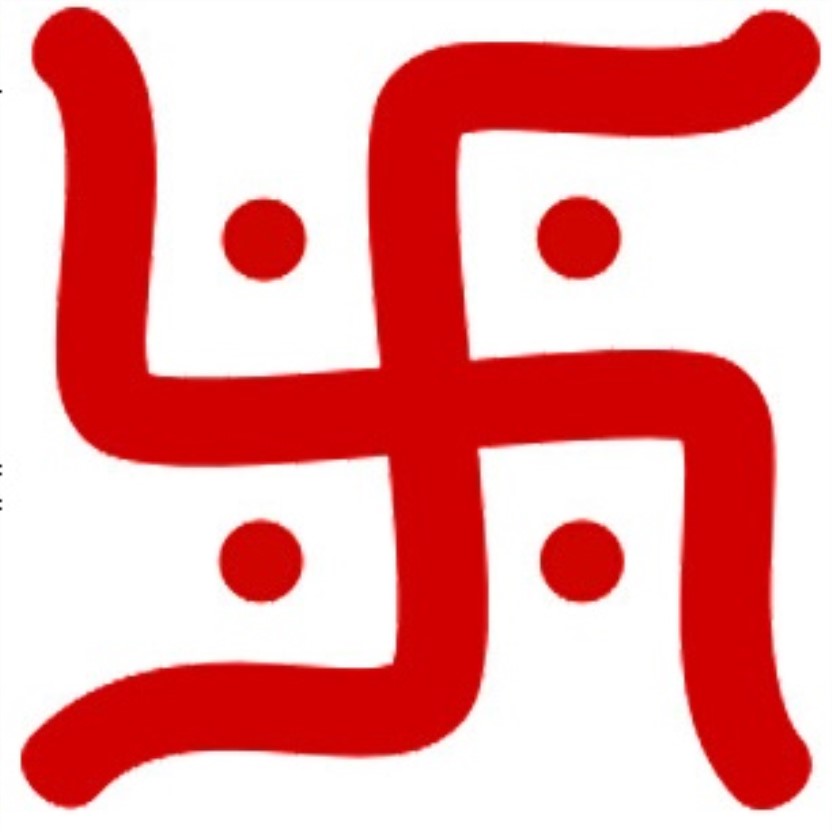
Swastika:
It is another important sacred symbol in Hinduism. It is usually drawn in front of the house, temples to bring good fortune. It is a cross of four lines with equal length. The crossing of lines can be vertical or horizontal. Swastika is drawn both in clockwise and anticlockwise direction. Clockwise swastika represents the motion of the sun. The anticlockwise which is also known as sauvastika represents the night and it is the icon of God Kali.
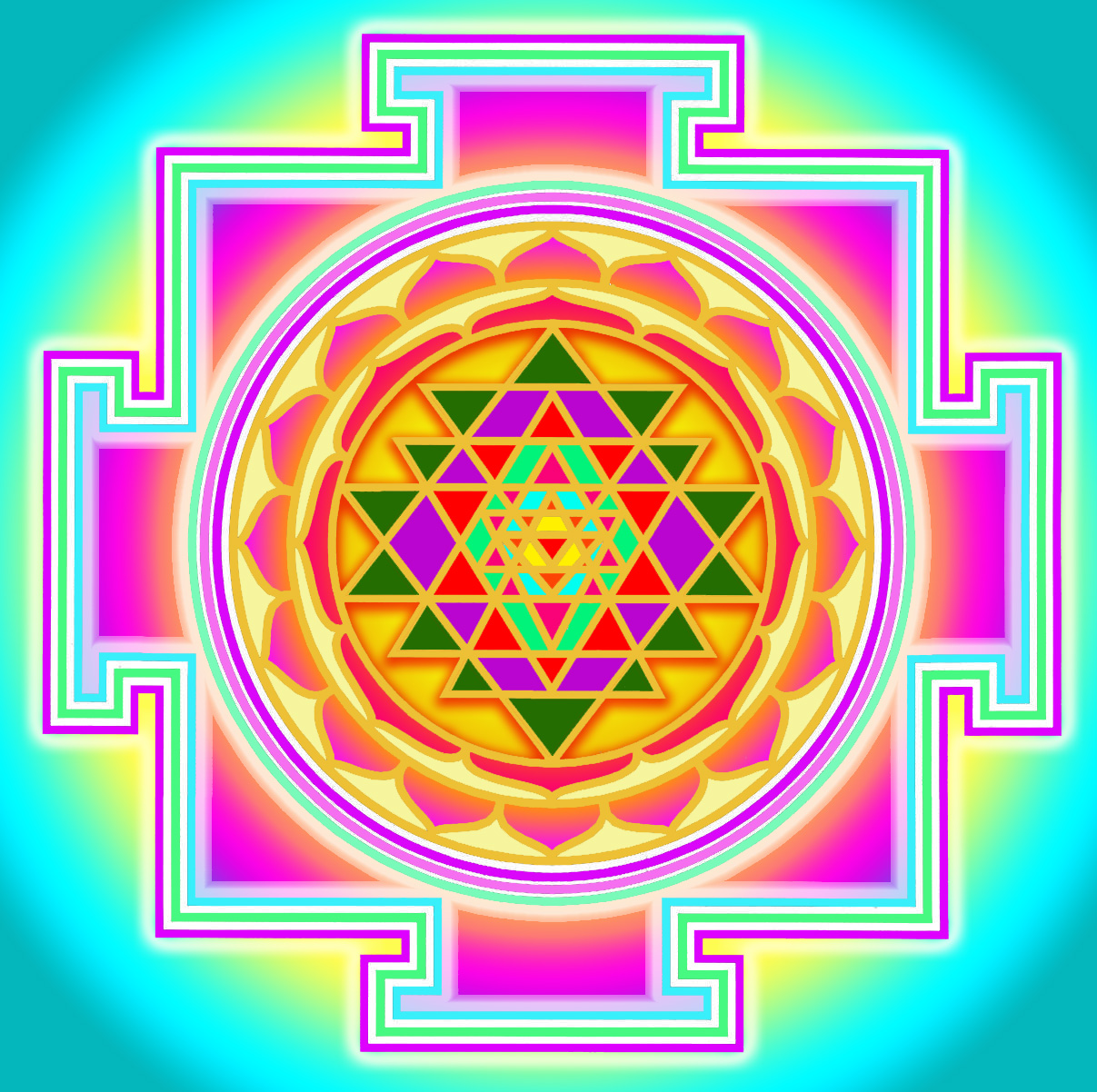
Sri Yantra:
It is also called as Shri Chakra and is formed by nine interlocking triangles that radiate from the central point. Of the nine triangles four triangles at the top represent Shiva or masculine and five below inverted triangles represent Feminine or Shakti. As a whole the nine triangles and the yantra represents the bond between masculine and feminine and also the nine triangles form the web symbolic of the entire cosmos.
Concept of God
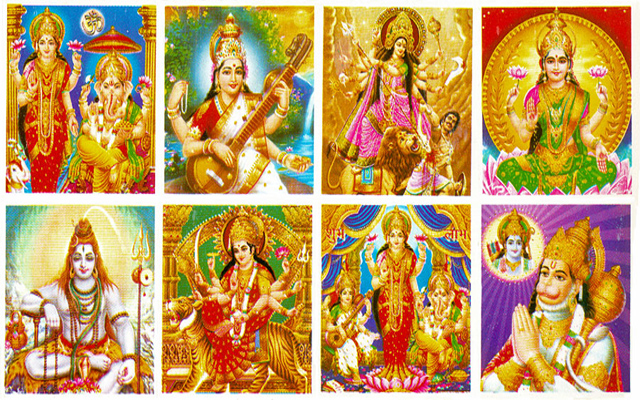
Hinduism is a very vast and diverse religion. It has a wide range of beliefs on God such as monotheism (belief in single God), polytheism ( Worship or belief in multiple gods) , panentheism (it is the belief that the divine interpenetrates every part of the universe), pandeism,monism (attributes oneness or singleness to the concept of existence), henotheism (worshiping of single god but not disbelieving the existence of other deities), atheism (rejection of belief that any deity exist) and nontheism.
These different beliefs on the existence of God are mentioned in the holy book Bhagavad Gita. Hindus believe that all living creatures have a soul called as atman. This atman is eternal. According to Advaita Vedanata atman is considered the same as Vishnu or Shiva but Dvaita Vedanta considers that God (Vishnu, Shiva) and the individual soul that is jivatman are separate and the soul is dependent on God.
Different avatars of Lord Vishnu including the Dashavataras are mentioned in Hindu scriptures. In addition to this Hindus worship many gods and goddesses with Brahma is believed to be the supreme god force. Some of the important deities which hindus pray to are Brahma, Vishnu, Mahaeshwara (Shiva), Ganapati, Lord Rama, Krishna and female Gods like Lakshmi, Saraswati, Kali, Durga and many many more.
Hindu Temple
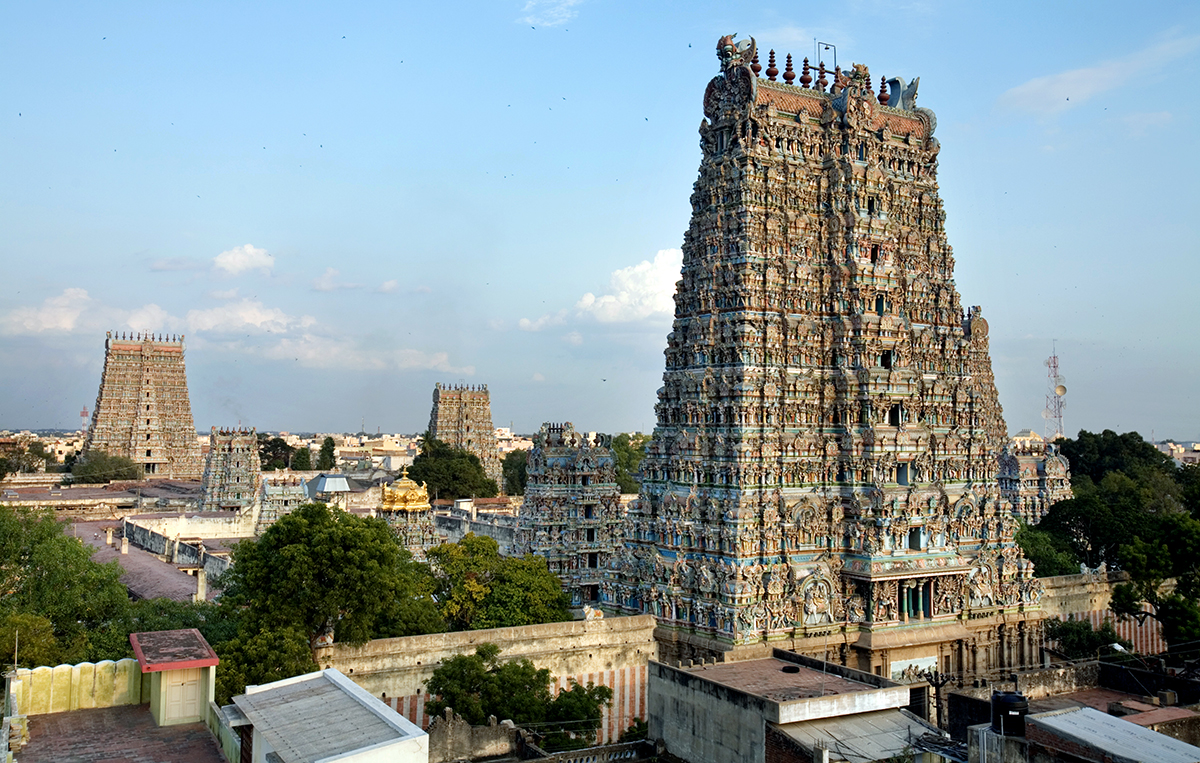
It is a spiritual place where the supreme god is kept and prayed. The temple incorporates all the elements of Hindu cosmos and symbolically presents Dharma, Artha, Kama, Moksha and Karma. A temple is a spiritual and a pilgrimage place for Hindu. Temples are built in different styles and are adopted to different deities and regional beliefs. The most important significance of the temple is ideals of dharma, values of life, beliefs that are followed under Hinduism.
Hindu temple architecture follows a geometrical design called vastu purusha mandala. Mandala means circle, Purusha means universal essence at the core of Hindu tradition and Vastu means dwelling structure. Above the Vastu Purusha Mandala is the structure of the temple with the dome called shikara in the north and vimana in the south India.
In larger temples the garbha griha is surrounded by pradhakshinapatha which is decorated with beautiful carvings and paintings of the God and Goddess. Larger temples also have pillared halls called mandapas. Some of the major temples are Tirupati Balaji temple, Puri Jagannath temple, Badrinath, Kedernath, Kasi, Ayyappa swamy temple, Padmanabha swamy temple, Brihadeshwara temple, Meenakshi temple and many many more.
Do share more on Hinduism with us by clicking the link here
Update on coronavirus in India
Affiliate Disclosure:
If you make any purchase via a link on this site, I may receive a small commission with no added cost to you.
